How AI Impacts Software Development? Grove Ventures’ ‘Shift Happens’ 2024 Report
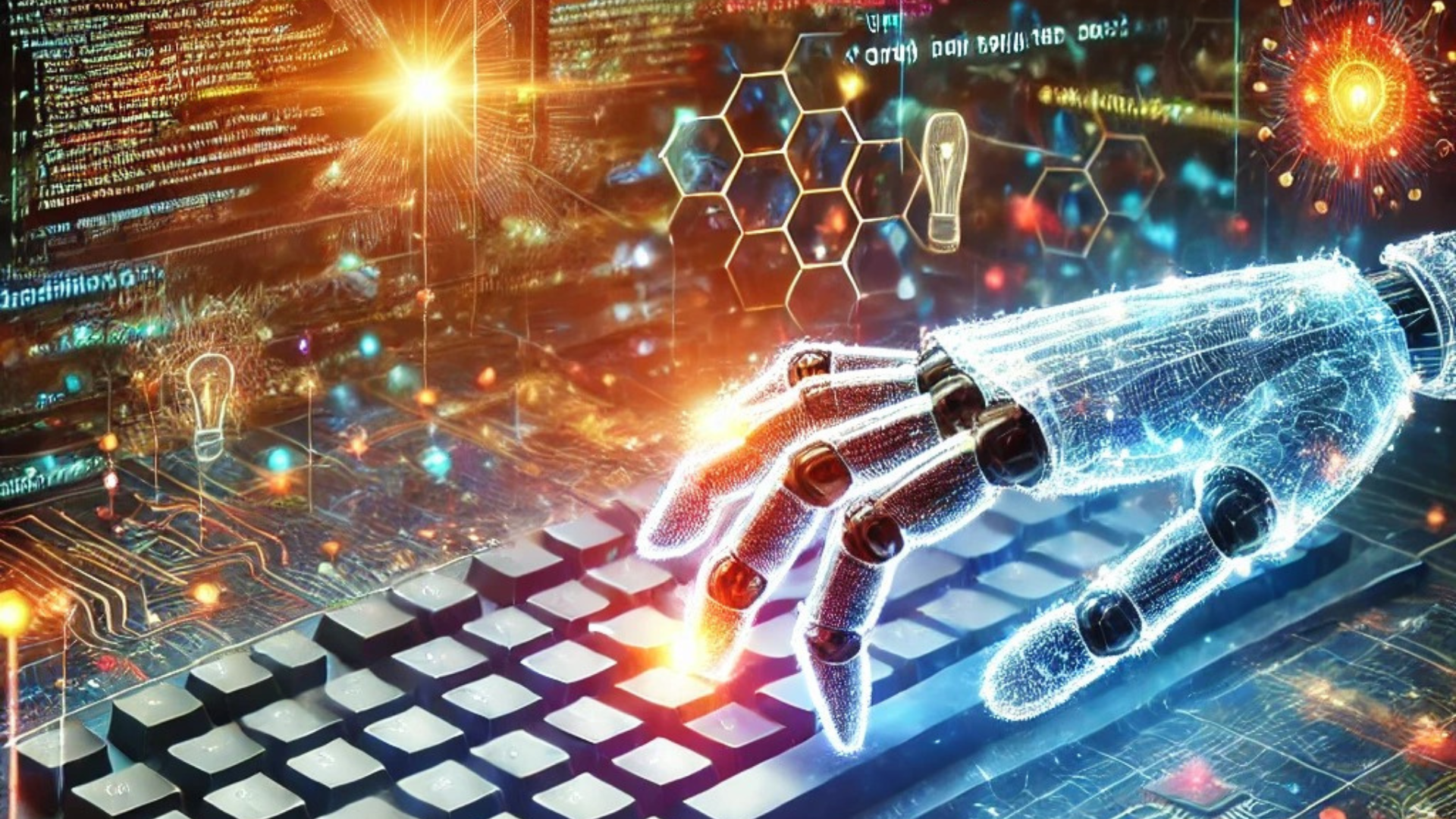
Over the last 2 years, Gen AI has dramatically reshaped development processes, with software engineers at the forefront since GitHub Copilot’s launch sparked this revolution. AWS CEO Matt Garman predicts AI could replace coding within two years. Gartner’s swift creation of a Magic Quadrant for AI code assistants, with $500 million raised in the last two weeks, underscores the fast-growing trend.
Our ongoing discussions with engineering executives globally reveal that Copilot and similar tools are just the beginning. As it is, this is just the start of what engineers foresee, paving the way for the next wave of Gen AI tools that could fundamentally change how software organizations operate.
At Grove Ventures, we’ve once again surveyed the market, interviewing over 50 industry leaders to examine the current impact of Gen AI on engineering teams and its potential in various overlooked areas of software infrastructure, such as DevOps, Product Management, and Data Science. Our goal was to explore how Gen AI tools can enhance productivity, creativity, and collaboration across all tech departments, beyond just code-generation tools.

In this report, we share key findings from our interviews and the insights that have emerged. Our focus is on how Gen AI influences an organization’s software development life cycle (SDLC), rather than on how Gen AI impacts existing products and the tools used to achieve that. Our takeaways are relevant for both engineering leaders and founders aiming to disrupt product development with the rise of Gen AI.
Here are the key findings:
Part I: The Current Landscape
1. First Steps Beyond Code Generation:
As mentioned, code generation has quickly become essential for engineers, with 92% now regularly using it—a significant leap from the 56% reported in our 2023 Shift Happens: State of the SDLC report. Moreover, this success has spurred developers to explore knowledge management and infrastructure tools.
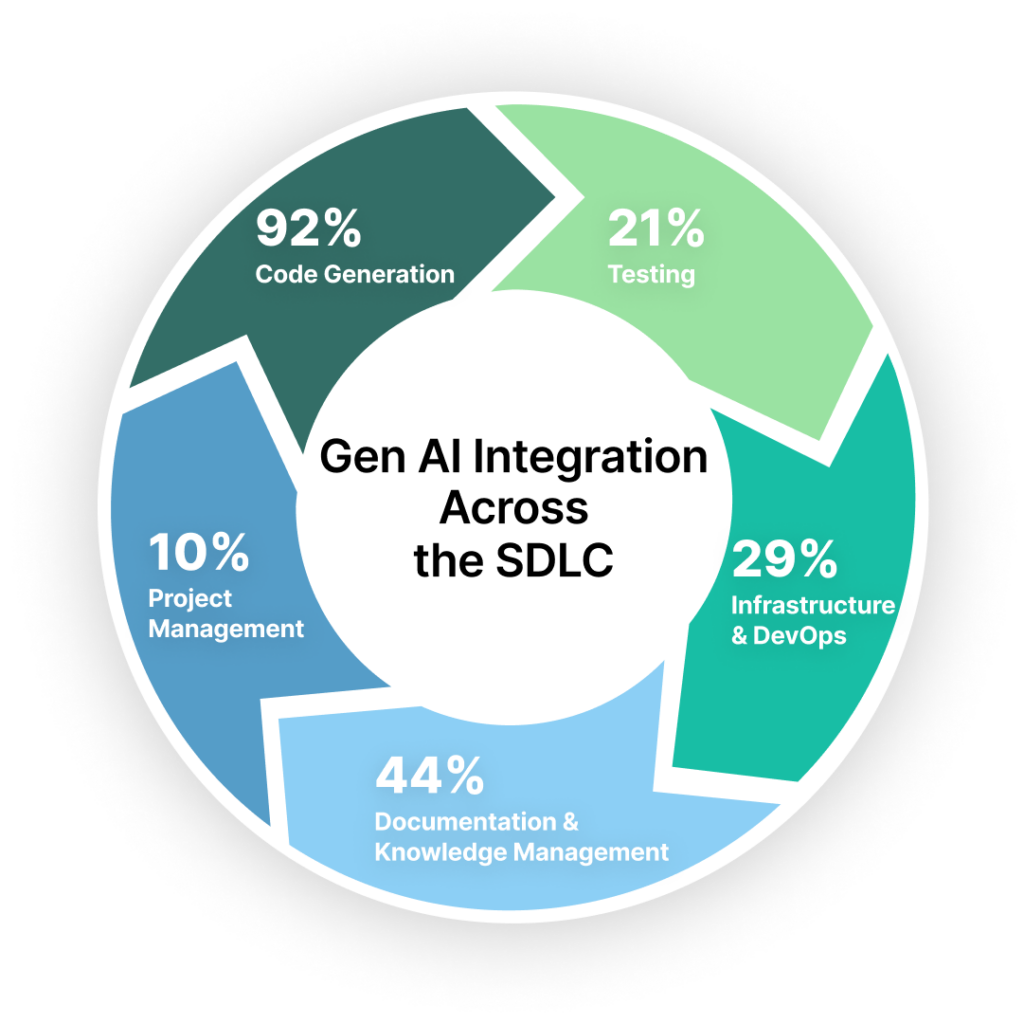
2. Who Said Size Doesn’t Matter?
Adoption of Gen AI tools is spreading among engineers in organizations of all sizes, with similar adoption rates observed regardless of the organization’s size.
Budget per user increases with organizational size, from $35 to $70 monthly. This indicates a specific budget line for adopting new Gen AI tools within large corporations, demonstrating their readiness to explore new and innovative solutions. Young startups building in the domain should understand this dynamic when crafting their GTM motion and pricing model.
Adoption of Gen AI tools is spreading among engineers in organizations of all sizes, with similar adoption rates observed regardless of the organization’s size.
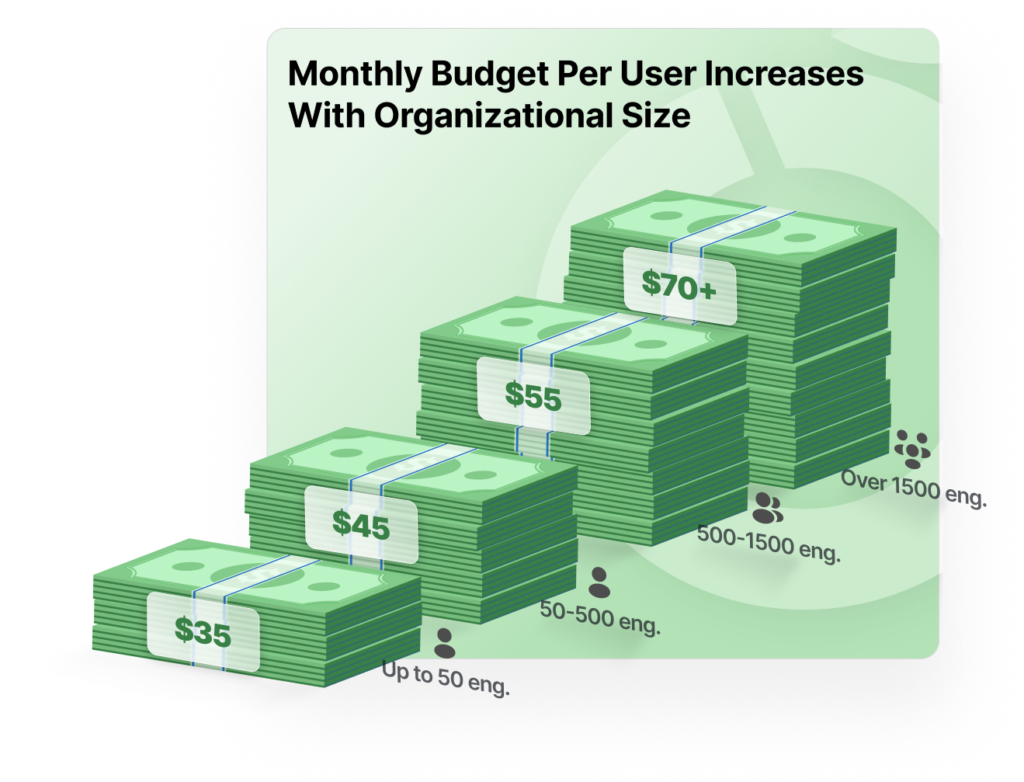
3. Popular Knowledge Tools Lose Their Fame
As Gen AI tools become more integrated into everyday workflows, traditional search and education tools like Google and Stack Overflow are seeing reduced use. This shift opens up opportunities for the next generation of knowledge tools, especially those tailored for internal organizational use where information isn’t as easily obtained or structured.
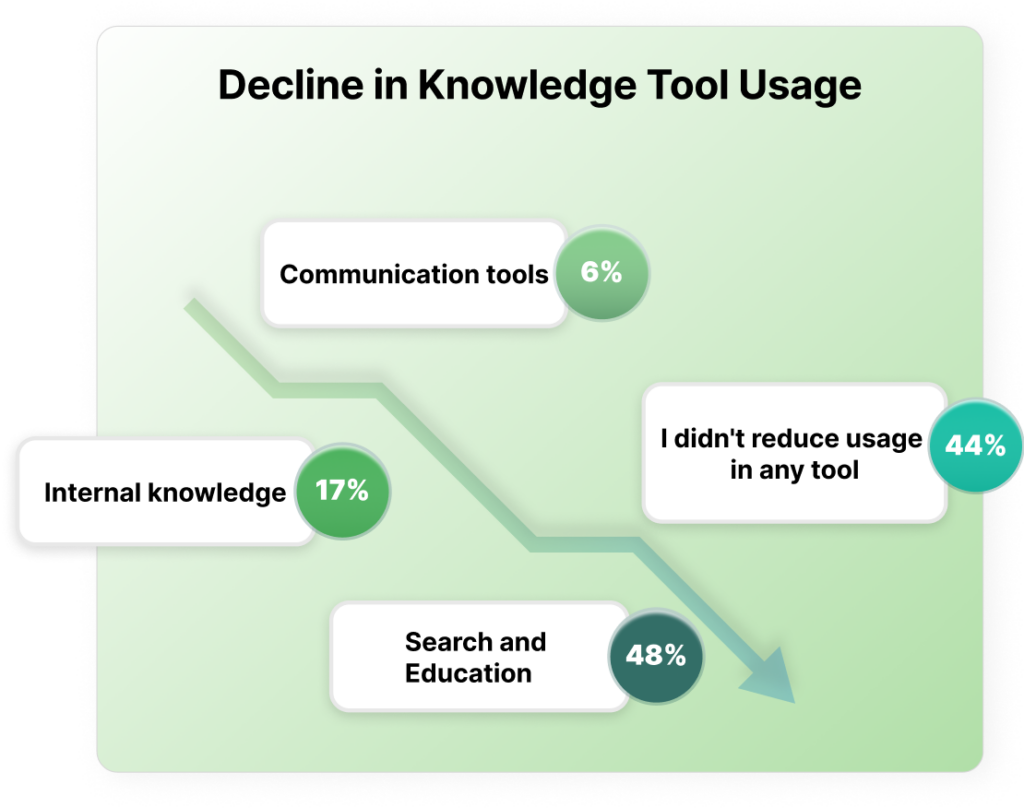
4. Dedicated Teams Emerging:
23% of organizations have established dedicated teams and procurement processes specifically for Gen AI adoption, with allocated budgets—an impressive jump from the 9% of organizations that had similar ‘gatekeeper’ teams for all software development tools, as reported in our 2023 Shift Happens report. These teams, whether organization-wide or department-specific, underscore a strong commitment to Gen AI, laying the groundwork for the next wave of SDLC tools.
Notably, founders should connect with these teams early, as they are likely to become key buyers. Understanding their priorities and budgets will be crucial.
5. New Practices Take Time
Engineering executives have struggled to fully adopt AI code assistants, with 58% expressing concerns about the quality and accuracy of current tools.
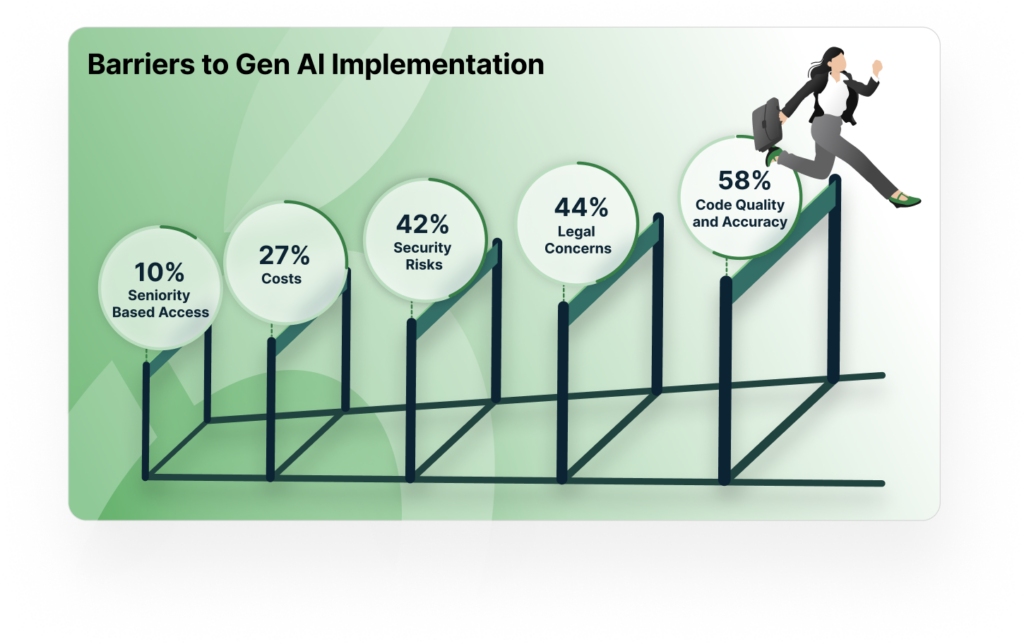
However, we expect this percentage to drop significantly as tools and models improve. As a result, we expect the role of software engineers to shift from being code creators to acting as engineering managers who oversee AI-driven code generation, fundamentally redefining the entire software development life cycle (SDLC).
Currently, just 16% of organizations have adapted their processes—adding review steps, updating onboarding, or adjusting management strategies. However, we expect this number to increase as the adoption of AI code assistants grows, paving the way for innovation and the development of new tools to support these evolving practices.
6. Necessary Guardrails
Our survey identified the key guardrails needed to scale Gen AI adoption effectively, from top to bottom:
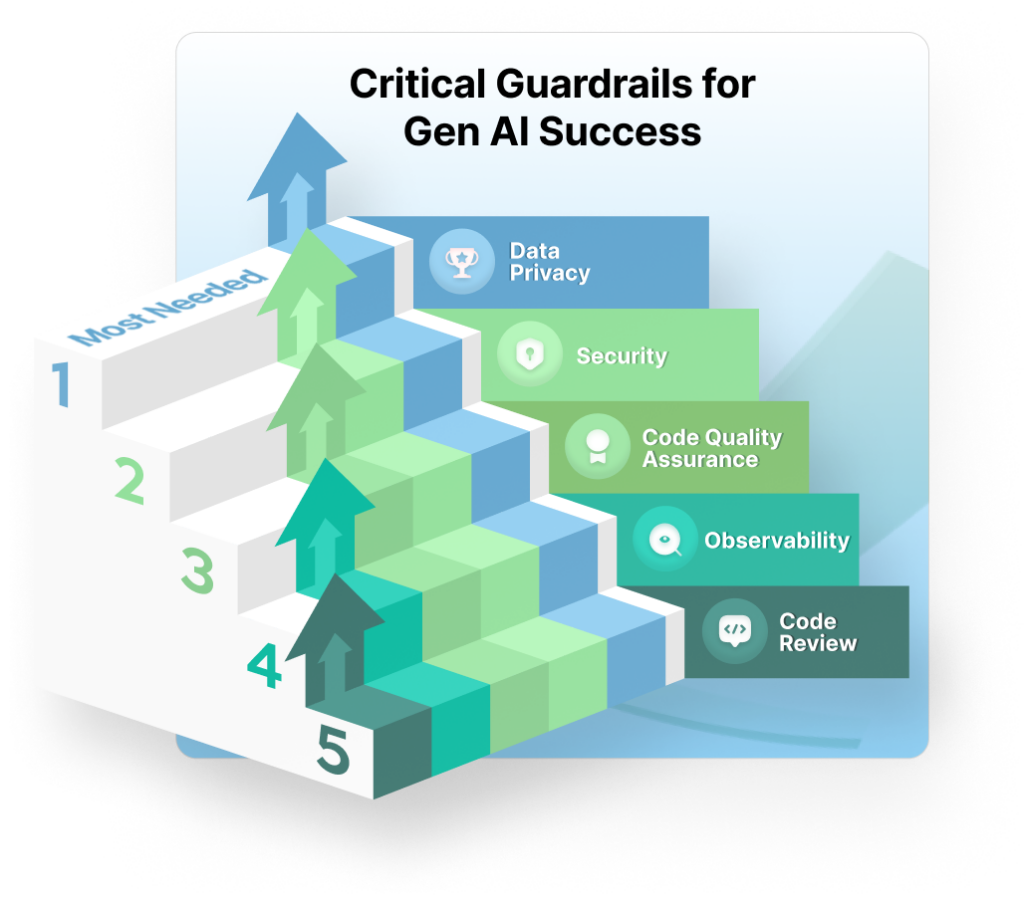
Part II: The Future is Now
1. Professions Gaining the Most Value from Gen AI
As code assistance is the most common use case of Gen AI products, it’s not surprising that most engineering executives believe that engineering managers and software engineers will be most impacted by Gen AI in the future. Engineering managers also believe that the role of the software architect will be redefined as AI code assistants become more advanced and coding skills become commoditized. This evolution will push engineers to assume more architectural responsibilities and require architects to expand their skill sets.
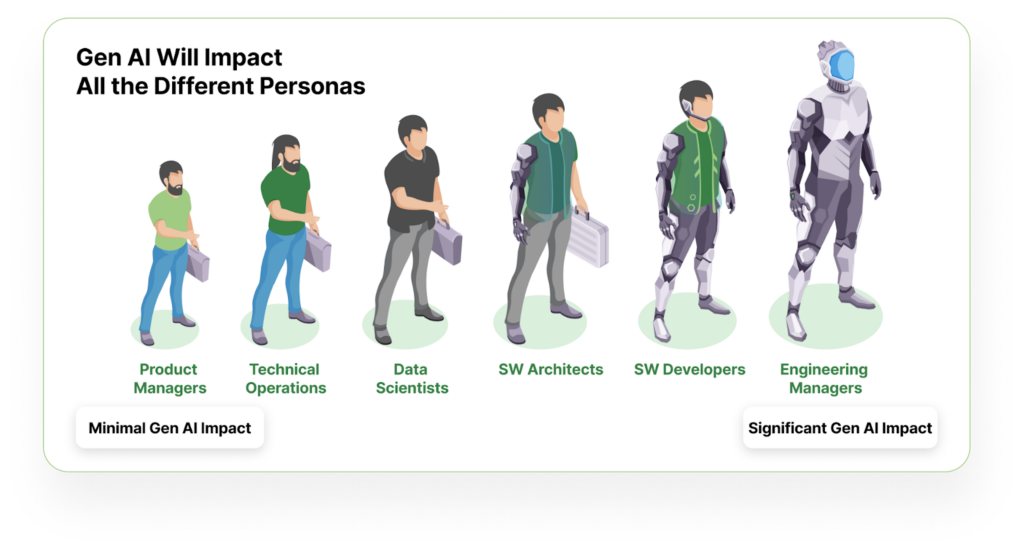
2. Where Can Gen AI Help Us Next?
The emphasis placed by respondents on leveraging DevOps and infrastructure-related data highlights the transformative potential of Gen AI in these areas. We believe the next wave of Gen AI will profoundly influence the operational side of the SDLC, particularly in platform engineering, infrastructure management, and observability—much like how AI code assistants have revolutionized coding practices.
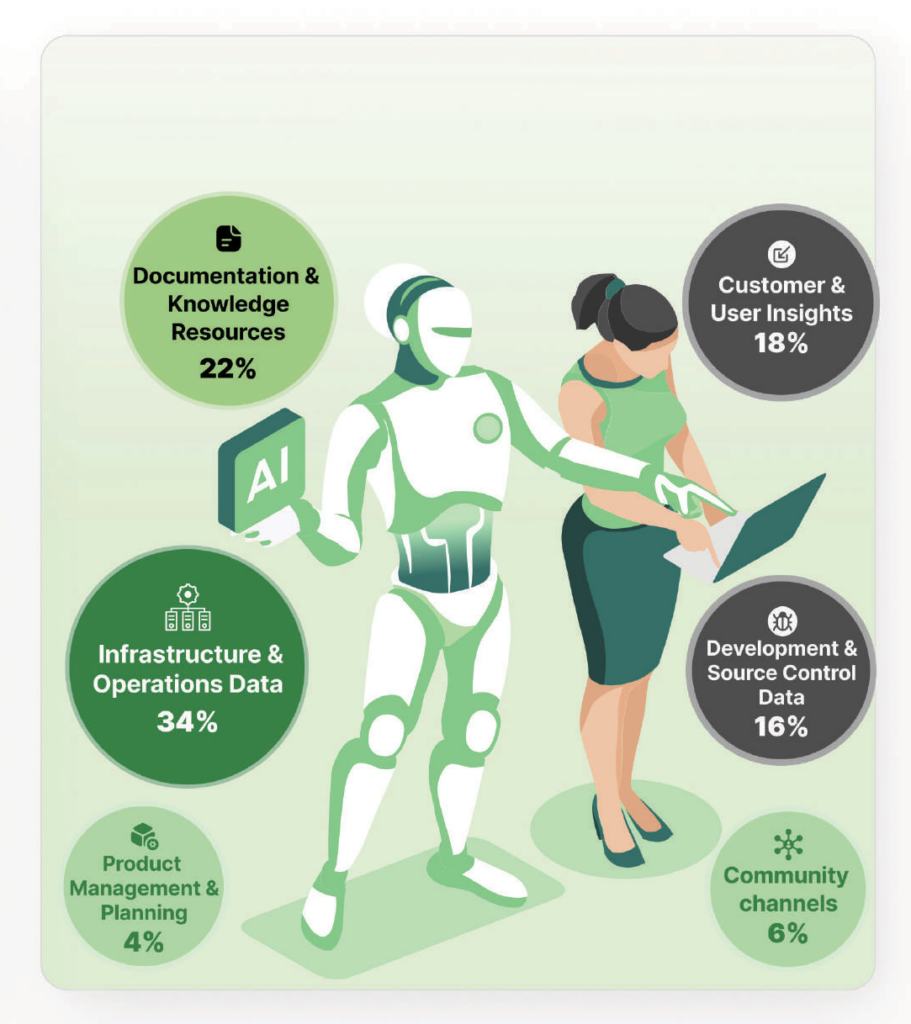
Simultaneously, the strong desire of engineering executives to become more customer-centric highlights a disconnect between engineering and business teams. In addition, many respondents believe AI could bridge this gap, enabling a direct understanding of customer needs without relying on intermediaries.
By integrating a variety of data sources beyond just code, executives envision a versatile future for AI that can significantly enhance various aspects of software development, from operational efficiency to customer satisfaction.
Conclusion
In summary, Gen AI’s influence extends far beyond code generation, poised to permeate every stage of the SDLC, beginning with operations. Moreover, the adoption of next-gen AI tools is expected to be swift, transforming engineering practices fundamentally. Gen AI integration will require organizations to adopt new processes, many of which are still not widely implemented. Likewise, corporations are preparing for this shift by setting budgets and defining unique buyer personas for Gen AI solutions, ensuring a keen interest in tools that offer a solid return on investment. As new startup companies emerge to tackle pressing issues like data privacy, security, and code quality, the rate of adoption among organizations is anticipated to rise significantly.
Download Presentation
Send Us Your Feedback and Join Grove Ventures’ Shift Happens Community
Disagree with us? Have any feedback? Let’s keep the conversation going.
If you’re a founder building in this space, we’d love to hear how you’re tackling these challenges and opportunities.
We would like to extend our gratitude to Niv Yungelson for her invaluable assistance in gathering the data and preparing this report. Special thanks to Zack Smocha, Guy Sayar, Philip Tannor, Amit Attias, Ofer Kirshenbaum and Ron Netzerel for reading drafts and contributing their thoughts.
To join our Shift Happens community, please fill in this form.

Lotan Levkowitz, General Partner – [email protected];

Tal Abuloff, Senior Associate – [email protected]

Or Git, Associate – [email protected]